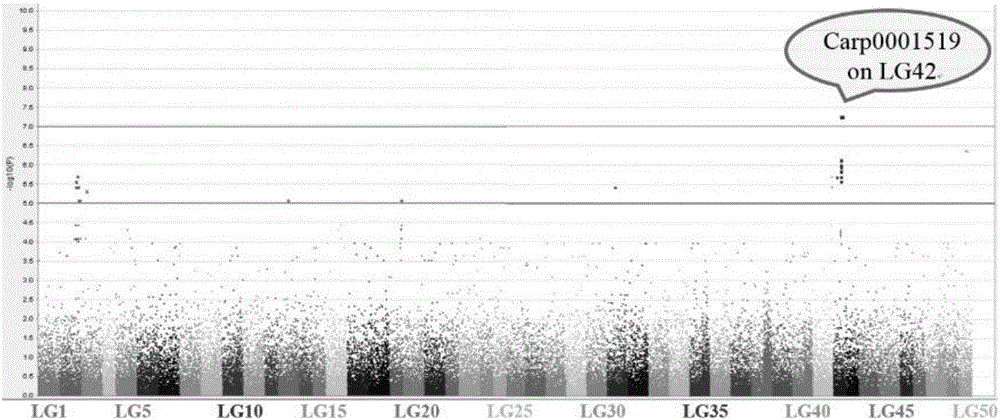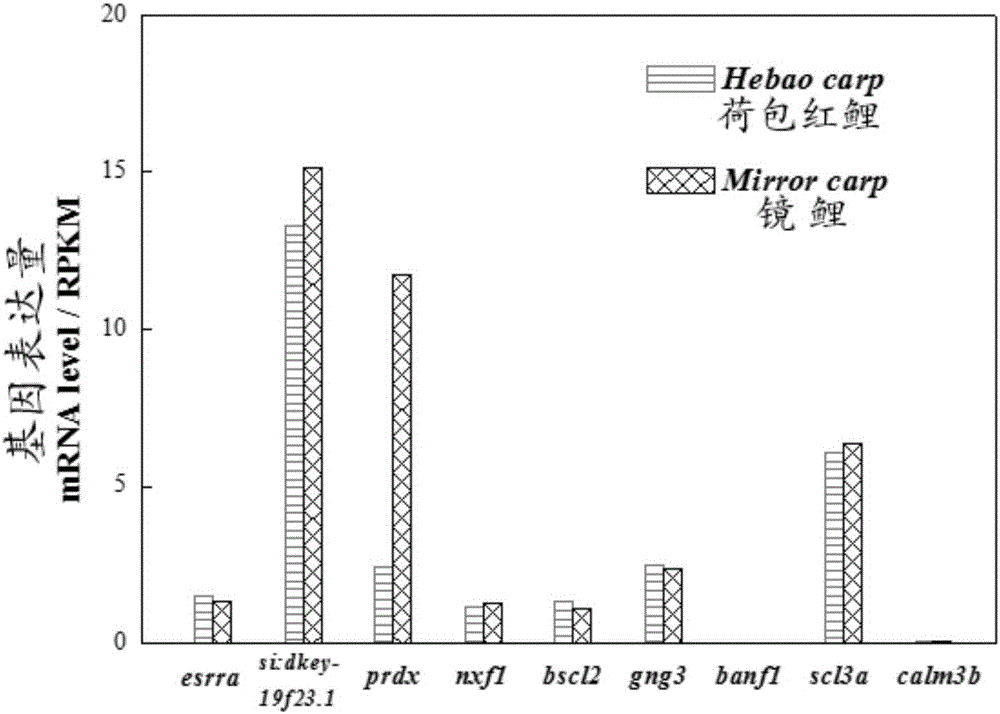Fish hypoxia-tolerance gene and application thereof
A technology for tolerance and fish, applied in genetic engineering, plant genetic improvement, application, etc., can solve the problems of inability to provide candidate genes and the small number of anti-stress genes, so as to avoid food safety and bioethical concerns, and improve hypoxia Survival rate, the effect of increasing the expression of antioxidant proteins
- Summary
- Abstract
- Description
- Claims
- Application Information
AI Technical Summary
Problems solved by technology
Method used
Image
Examples
Embodiment 1
[0060] 1. GWAS analysis of carp hypoxia tolerance traits
[0061] Hypoxia tolerance traits vary significantly among different species and geographic groups of common carp. The F10 hybrid descendants of the hypoxia-tolerant variety Mirror carp and the hypoxia-sensitive variety Pouch red carp were selected as the experimental group, and the experimental individuals were reared in the same pond until they were 3 months old, and then moved into an indoor temporary breeding tank for 7 days at 25°C to adapt Environment, select individuals with no trauma, no infection, normal swimming and feeding for hypoxic experiments. Oxygenation with an air pump to control the dissolved oxygen concentration above 6.0mg / L, stop oxygenation after 24 hours of fasting, so that the dissolved oxygen concentration continues to decline naturally, and collect venous blood samples one by one when the individual is hypoxic and comatose. The average body weight of the experimental individuals was 107±20g, a...
PUM
 Login to View More
Login to View More Abstract
Description
Claims
Application Information
 Login to View More
Login to View More - R&D
- Intellectual Property
- Life Sciences
- Materials
- Tech Scout
- Unparalleled Data Quality
- Higher Quality Content
- 60% Fewer Hallucinations
Browse by: Latest US Patents, China's latest patents, Technical Efficacy Thesaurus, Application Domain, Technology Topic, Popular Technical Reports.
© 2025 PatSnap. All rights reserved.Legal|Privacy policy|Modern Slavery Act Transparency Statement|Sitemap|About US| Contact US: help@patsnap.com



